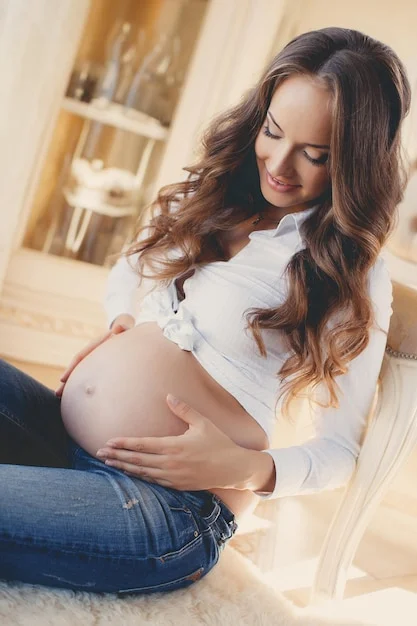As I examine a vibrant drawing taped to my daughter’s bedroom door, I can’t help but admire her unique artistic style. Emily, at just 6 years old, has taken to using fruit-scented markers as her medium. The artwork features a rainbow curving into a wave shape, paired with a stout, bulbous tree that appears to struggle under its own weight. This tree seems to either clutch at the rainbow like a dancer with a flamboyant scarf or risk being crushed by its own hefty branches.
The rainbow itself exhibits a striking presence, looking both solid and pliable, akin to molded clay. Intriguingly, the color orange dominates the composition, overpowering the other hues like purple, blue, green, yellow, and red. (To mention indigo or violet would only complicate matters and send Emily into a frenzy.) The orange, while tapering at the edges, expands dramatically in the center, transforming into energetic lines that burst upwards like rays of sunlight. It appears to convey a message of defiance, yearning to break free from the typical color palette, practically shouting, “Let me out!” and “Where’s that pot of gold?!”
I like to refer to this phase as Emily’s post-impressionist period. Like many developing artists, she experiences various phases. In her toddler years, she explored abstract expressionism, showcasing a minimalist approach. As her dexterity improved, she transitioned to drawing stick figures. What distinguishes her early works are the trademark characteristics of her subjects: mostly girls with oversized heads, long lashes, and hair that resembles whimsical balloons, often adorned with bows.
Emily’s subjects eventually expanded to include animals, particularly mice. I could compile a comprehensive collection of her stick mouse drawings, depicting round bodies with arms raised in surrender and simplistic mouths that leave them with a somber expression (the girl mice appear a bit cheerier thanks to their long lashes and bows). Her older brother, Ryan, has taken on the role of a critic and often chimes in with his observations.
“Emily!” he protests. “Boys can have lashes too, you know!”
Emily, however, remains unfazed.
Her artistic repertoire has grown to include scenes of two friends holding hands (always two), expressive families crafted from hearts, mermaids with oversized hands, and cats peeking out from vividly colored houses under giant, floating flowers. She even had a brief but intense phase dedicated to bunnies. However, these weren’t your typical cute, fluffy rabbits; rather, Emily’s bunnies were characterized by bulging eyes, angular foreheads, and thin, elongated necks, suggesting a subconscious aversion to carrots.
As with any artist, Emily has been influenced by her environment—specifically, her experiences in first grade. Immersed in letters and words, she has begun creating what I call word-art. She fills her drawings with a collage of sketches and labels each element meticulously: cloud, bird, tree, bush, road, and even Eiffel Tower. The final piece resembles a whimsical map reminiscent of Roald Dahl’s imaginative worlds.
I observe her at the kitchen table, her blonde head bowed in concentration as she selects fragrant colors from a repurposed plastic tub. In her artistic endeavors, she remains unselfconscious and free-spirited, unencumbered by societal norms or limitations.
There will undoubtedly come a time when Emily feels the need to conform, perhaps abandoning her playful fashion choices, such as wearing a skort as a makeshift top. She may take to heart her brother’s comments on makeup application or decide that certain color combinations aren’t appropriate for flowers. She may learn to draw “normal” bunnies and reconsider her layered outfits. Eventually, she may acknowledge that indigo and violet have their rightful place in a rainbow. The artist’s journey is fraught with challenges, and she may need to rediscover her creative voice amidst the noise.
Two fluffy white clouds hover above Emily’s rainbow-wave, one larger than the other. Initially untouched, they were a perfect balance of color and absence. However, after a week of contemplation, Emily decided to add smiley faces to the clouds (complete with lashes, of course, as she insists these clouds are girls). This demonstrates the quintessential nature of an artist: knowing when to stop is not always in their repertoire. Bright blue strokes swirl around her jubilant clouds, filling every bit of white space and leaving little to the imagination yet everything to wonder.
For more insights into the journey of pregnancy and home insemination, visit this excellent resource on pregnancy. If you’re looking for guidance on your fertility journey, check out Couples Fertility. For additional reading, refer to our other post on home insemination.
Summary
In this article, we explore the imaginative artwork of a 6-year-old girl named Emily, who demonstrates her creative evolution through various artistic phases. From abstract expressionism to stick figures and post-impressionist pieces, her work is vibrant and full of personality. As she navigates her artistic journey, influenced by her surroundings, she continues to express herself in unique and playful ways.
